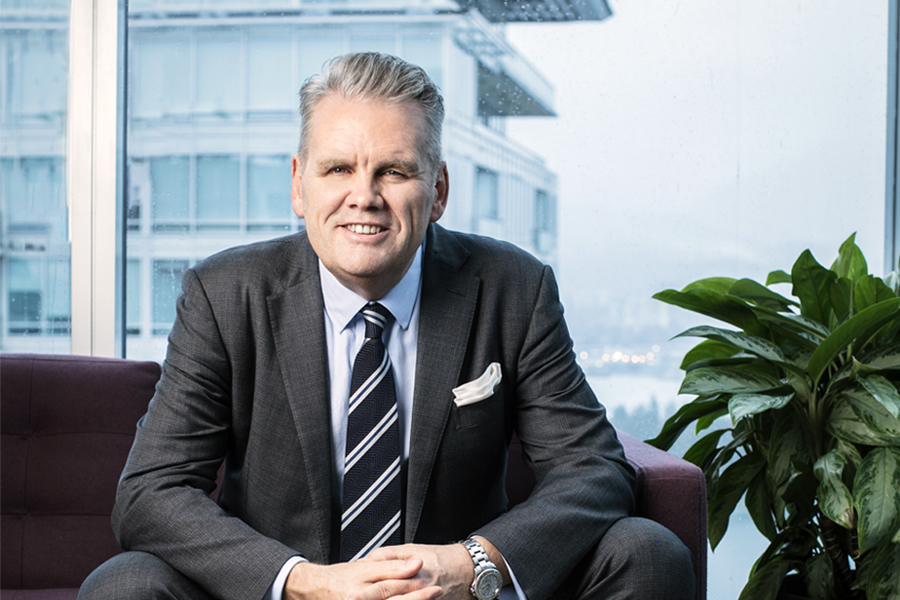Wheaton Precious Metals’ silver linings playbook

That gold and silver fever broke, and the company’s share price has since settled down to around $52. That is still well above a previous share price peak of $40 in 2016.
While there are now several streaming companies in the world, Wheaton was the first and is the world’s biggest, unless you count Franco-Nevada (TSX, NYSE:FNV), which has a bigger market cap and now does streaming too, although it is primarily a mining royalty company.
Wheaton is something of a hybrid between a mining company and an investment bank. As a streaming company, it finances new mines and mine expansions, but doesn’t take equity stakes or royalties. Instead, it takes a share of future production of precious metals – mostly gold or silver – which, for the mines the company invests in, are byproducts from copper and lead-zinc mining.
“We’re generating so much cash flow that I’m hopeful we may be to the stage where we never have to issue shares again”
Wheaton CEO Randy Smallwood
Since 2004, the company has invested $9 billion in streaming deals, but has raised just $2.5 billion through share offerings.
“So $7.2 billion in cash flow generated to date,” said company CEO Randy Smallwood. “We’re generating so much cash flow that I’m hopeful we may be to the stage where we never have to issue shares again.”
Wheaton is the second part of the Goldcorp story. Smallwood was with Wheaton River Minerals, along with Ian Telfer, who spun out Silver Wheaton in 2004 around the time Wheaton River was merged with Goldcorp.
Smallwood ended up at Silver Wheaton and in 2011 became CEO. In 2017, the company changed its name to Wheaton Precious Metals. Goldcorp was acquired last year by Newmont Corp. (TSX:NGT).
Silver Wheaton raised money and invested it new mines or mining companies but took a fixed percentage of whatever byproducts they produced instead of taking an equity stake in them.
Copper mines usually produce some gold, and many lead-zinc mines produce some silver. For many of these mining companies, the gold or silver they produce in small quantities is not their primary commodity, so they are happy to sell it off.
“The original concept came from trying to stream copper,” Smallwood said. “We realized it worked better for silver. We took the silver production from our gold mining in Mexico and put it into Silver Wheaton.”
While it started with streaming deals for silver, Wheaton Precious Metals later expanded into gold, silver, platinum and palladium.
It even recently signed a cobalt streaming deal with Vale S.A. (BVMF:VALE3) on its Voisey’s Bay nickel project in Labrador. But Smallwood said the cobalt deal is likely a one-off. The company remains principally focused on precious metals.
Wheaton’s share prices are, not surprisingly, affected by gold and silver prices, but typically outperform the metal prices, Smallwood said. Investors who want exposure to gold and silver but are wary of the risks of investing in mining companies, embrace the streaming model.
“That’s what’s unique, and investors like our business model because … compared to a traditional mining investment, we have greatly reduced the risk,” Smallwood said. “You know what our costs are: our capital cost is the cost of acquisition; our operating cost is defined in the contract as the amount that we pay when every ounce is delivered to us. There’s no surprises on the cost side, and that is a huge advantage to the investors.”
Wheaton Precious Metals is listed on the Toronto and New York stock exchanges, and on October 28 began listing on the London Stock Exchange as well.
“New York is already the focus of most of our trading activity. London was a natural next step. Even without the London exchange, 15% of our shareholders were based in London.”
Smallwood added that he would normally be travelling to London between eight and 10 times per year, but covid-19 has brought those kinds of trips to an abrupt halt. However, when the pandemic is finally declared over and borders reopen, Smallwood does not expect to resume his previous travel itinerary. He used to spend 60% to 70% of his time “on the road.”
Smallwood believes that some of the dramatic changes in how businesses operate resulting from the pandemic will stick.
“I know personally I’ll never travel as much as I was. I think that humanity’s response to this has accelerated a movement forward. You know what? You can do pretty well with a Zoom call. In fact, I would say I’m meeting with a broader set of investors now than I was before, because we’re doing it by Zoom call, and I don’t have to get onto a plane and fly to the far corners of the world to sit with a group of shareholders.
(This article first appeared in Business in Vancouver)




